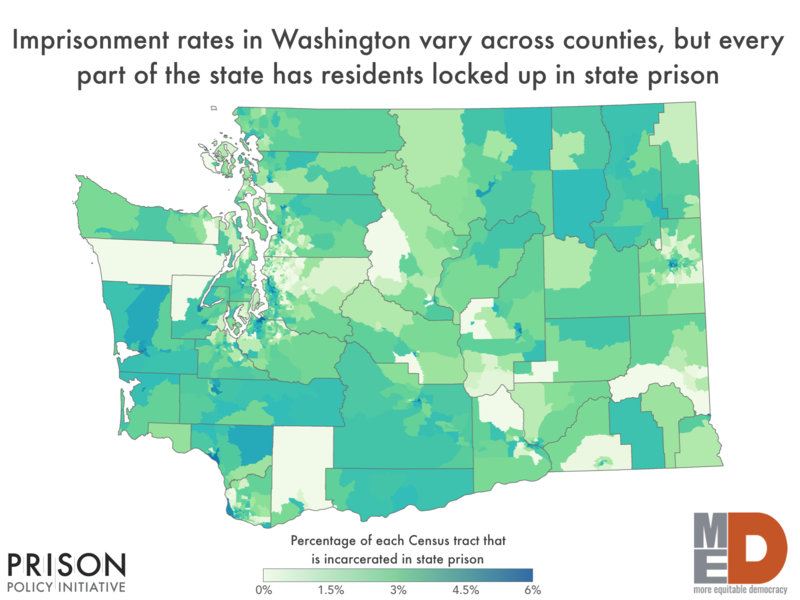New data reveals where people in Washington prisons come from
Report shows every community is harmed by mass incarceration
August 3, 2022
Today, More Equitable Democracy and the Prison Policy Initiative released a new report, Where people in prison come from: The geography of mass incarceration in Washington, that provides an in-depth look at where people incarcerated in Washington state prisons come from. The report also provides eleven detailed data tables — including neighborhood-specific data for Seattle, Vancouver, Tacoma and Spokane — that serve as a foundation for advocates, organizers, policymakers, data journalists, academics and others to analyze how incarceration relates to other factors of community well-being.
The data and report are made possible by the state’s landmark 2019 law that requires that people in prison be counted as residents of their hometown rather than in prison cells when state and local governments redistrict every ten years.
The report shows:
- Every single county — and every state legislative district — is missing a portion of its population to incarceration in state prison.
- Many of the state’s smaller and midsized counties, including Grays Harbor, Cowlitz, Lewis, Yakima, and Asotin have some of the highest incarceration rates in the state, making clear that the notion that mass incarceration is a problem just impacting large urban areas is a myth.
- There are dramatic differences in incarceration rates within communities. For example, in Spokane, residents of the West Central neighborhood are more than forty times as likely to be imprisoned than residents of nearby Balboa-South Indian Trail.
- Some Native communities are hit particularly hard by mass incarceration, with Skokomish, and Squaxin Island Reservations reporting imprisonment rates over 1,000 per 100,000 residents, more than five times the state average.
Data tables included in the report provide residence information for people in Washington state prisons at the time of the 2020 Census, offering the clearest look ever at which communities are most impacted by mass incarceration. They break down the number of people locked up by county, city, town, zip code, legislative district, census tract and other areas.
The data show that while King County has the most imprisoned residents (3,072), it has one of the lowest county imprisonment rates in the state, with 135 imprisoned people per 100,000 residents. On the other hand, Grays Harbor County has the highest county rate in the state, with 470 people imprisoned per 100,000 residents. For context, the statewide imprisonment rate for Washington is 197 per 100,000 residents.

“The nation’s 40-year failed experiment with mass incarceration harms each and every one of us. This analysis shows that while some communities are disproportionately impacted by this failed policy, nobody escapes the damage it causes,” said Emily Widra, Senior Research Analyst at the Prison Policy Initiative. “Our report is just the beginning. We’re making this data available so others can further examine how geographic incarceration trends correlate with other problems communities face.”
The report cites studies that show that incarceration rates correlate with a variety of negative outcomes, including higher rates of asthma, depression, lower standardized test scores, reduced life expectancy and more. The data included in this report gives researchers the tools they need to better understand how these correlations play out in Washington.
“Mass incarceration harms each of us, but it doesn’t harm each of us equally. We’ve known for too long that poorer communities and communities of color are over-policed, over-incarcerated, and under-resourced,” said Colin Cole of More Equitable Democracy. “This data is a tool to help policymakers, advocates, and service providers address the damage that has been done and build stronger, healthier, and more secure communities.”
The report is part of a series of reports examining the geography of mass incarceration in America.
Washington is one of more than a dozen states and 200 local governments that have addressed the practice of “prison gerrymandering,” which gives disproportional political clout to state and local districts that contain prisons at the expense of all of the other areas of the state. In total, roughly half the country now lives in a place that has taken action to address prison gerrymandering.



